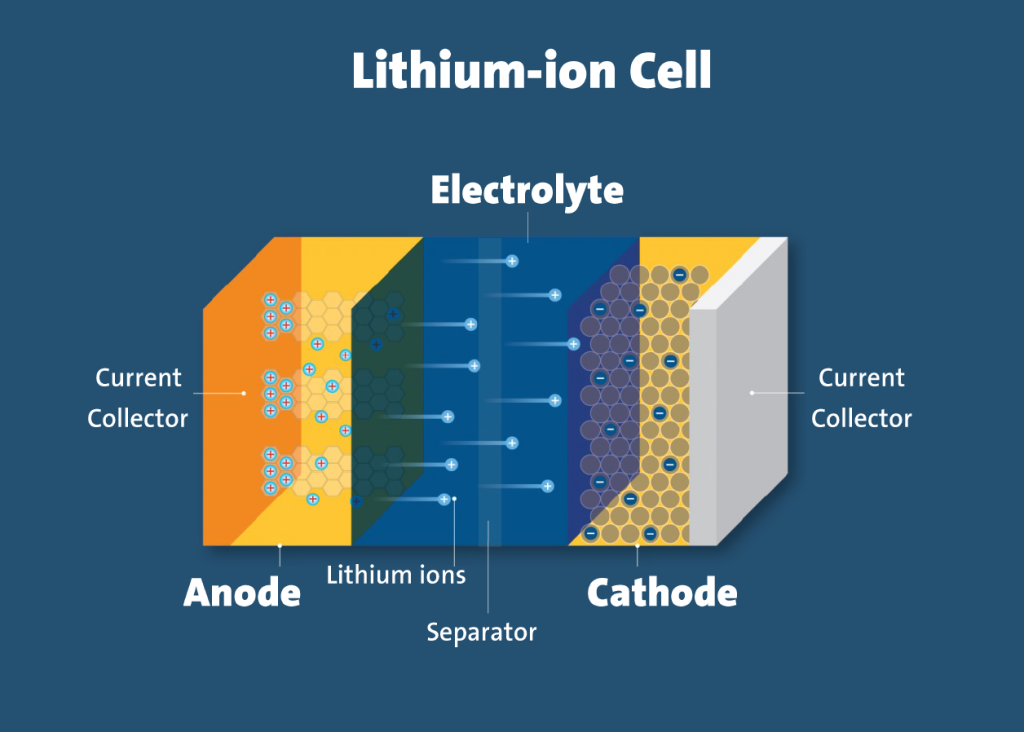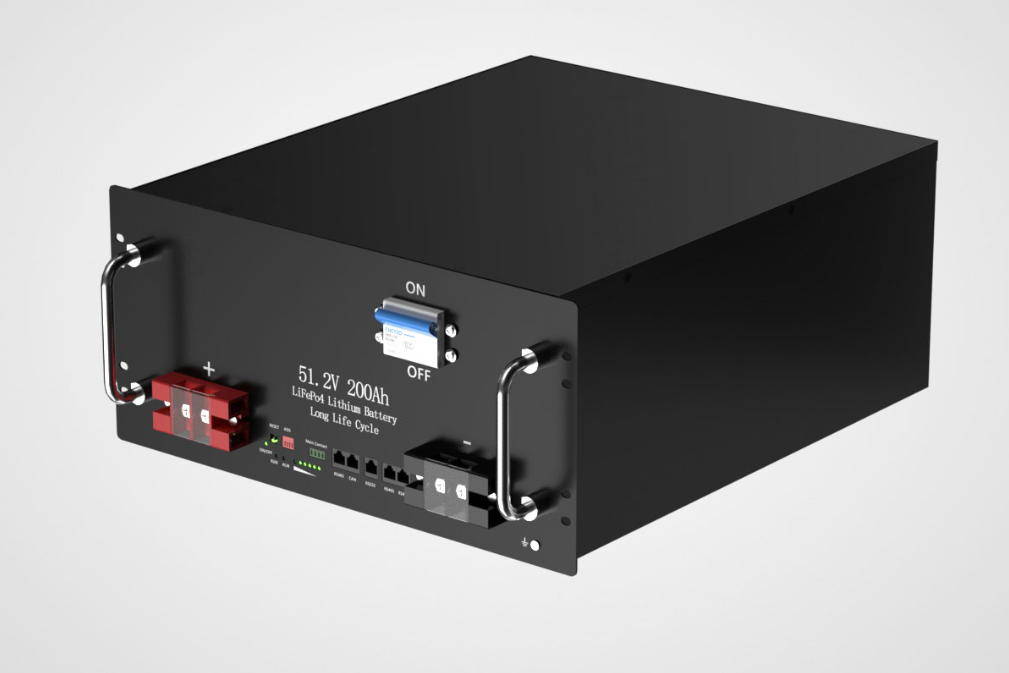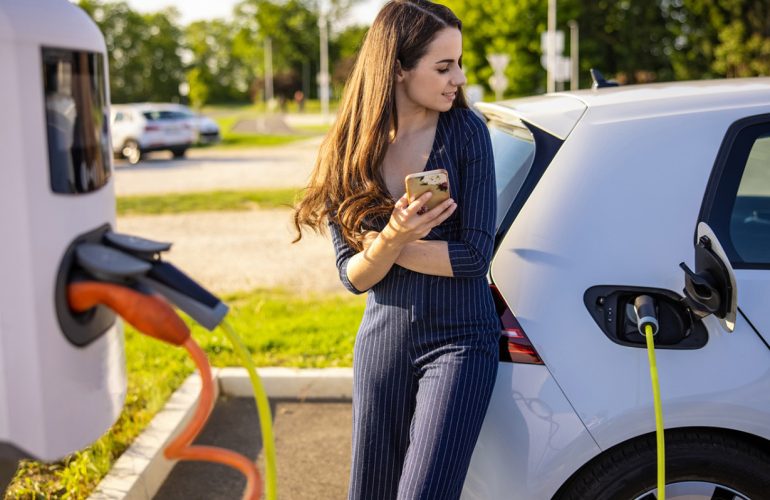Lithium battery have revolutionized the world of portable electronic devices and renewable energy storage.Lithium-ion is the most popular rechargeable battery chemistry used today. Lithium-ion battery power the devices we use every day, like our mobile phones and electric vehicles.Lithium-ion battery consist of single or multiple lithium-ion cells, along with a protective circuit board. They are referred to as battery once the cell, or cells, are installed inside a device with the protective circuit board.
Understanding Lithium battery
Lithium battery are rechargeable energy storage devices that use lithium ions to transfer energy. They have gained popularity due to their high energy density, lightweight nature, and longer lifespan compared to other battery types. These battery operate based on the movement of lithium ions between the positive and negative electrodes.
Composition and Components of Lithium battery
Lithium battery consist of several key components. The positive electrode, or cathode, is typically made of lithium metal oxides, such as lithium cobalt oxide or lithium iron phosphate. The negative electrode, or anode, is usually composed of carbon or graphite. The electrolyte, a conductive medium, facilitates the movement of lithium ions, while the separator prevents short circuits between the electrodes.
What are the components of a lithium-ion cell?

- Electrodes: The positively and negatively charged ends of a cell. Attached to the current collectors
- Anode: The negative electrode
- Cathode: The positive electrode
- Electrolyte: A liquid or gel that conducts electricity
- Current collectors: Conductive foils at each electrode of the battery that are connected to the terminals of the cell. The cell terminals transmit the electric current between the battery, the device and the energy source that powers the battery
- Separator: A porous polymeric film that separates the electrodes while enabling the exchange of lithium ions from one side to the other
Types of Lithium battery
There are various types of lithium battery, including lithium-ion (Li-ion) battery, lithium polymer (LiPo) battery, lithium-sulfur (Li-S) battery, and others. Li-ion battery are the most common and widely used, offering a good balance between energy density, lifespan, and safety. LiPo battery are flexible and lightweight, making them suitable for slim devices. Li-S battery have the potential for higher energy density, but they are still in the experimental stage.
Advantages and Applications of Lithium battery
Lithium battery offer several advantages over traditional battery technologies. They have a high energy density, allowing devices to run for longer periods between charges. They also have a low self-discharge rate, retaining their charge when not in use. Lithium battery find applications in smartphones, laptops, electric vehicles, and renewable energy systems, providing portable and reliable power sources.
How Do Lithium-Ion battery Work?
As stated above, the separator in the lithium battery moves lithium ions from the cathode to the anode and vice versa through the electrolyte.
As the lithium ions move, it activates free electrons in the anode, which creates a charge at the positive current collector. Then, there is a flow of that electric current through the powered device (cell phones, laptops, etc.) to the negative current collector. The flow of electrons inside the battery is blocked by the separator.
When you plug in your electronic devices to charge, the cathode releases lithium ions, and they are received by the anode to ensure the battery is recharged. While during the discharge process, lithium ions are released by the anode and received by the cathode, resulting in the generation of a flow of electrons from one end to the other.
Internal Components of a Li-ion Battery
If you dismantle a lithium battery (not recommended), you will see the following;
- Li-ion cells: They can either be prismatic, cylindrical cells, or pouch cells (aka lithium polymer).
- Battery Charge State Monitor: This is a small computer that controls the charging process of the battery.
- Voltage tap: Tasked with monitoring the energy capacity of individual cells of the battery.
- Notebook Connector: Allows smooth flowing of information and power in and out of the battery.
- Regulator Circuit and Voltage Converter: They maintain safe levels of current and voltage.
- Temperature sensors: For monitoring the temperature of the battery.
Safety Considerations and Environmental Impact
Safety is a critical aspect of lithium battery. Overcharging, overheating, or physical damage can lead to thermal runaway or even explosions. Manufacturers incorporate safety features like protection circuits and thermal management systems to mitigate these risks. Additionally, the disposal and recycling of lithium battery require proper handling due to their potential environmental impact.
Maintenance and Charging Techniques for Lithium battery
To maximize the lifespan and performance of lithium battery, proper maintenance and charging techniques are essential. Avoiding extreme temperatures, regular calibration, and using compatible chargers are important considerations. It is also crucial to follow manufacturer guidelines regarding storage and usage conditions.
What Are The Applications Of Lithium battery?
There are no limitations when it comes to the application of lithium-ion battery in the real world as it has been tested by different companies and used in portable electronics or small devices (laptop, camcorders, energy storage systems, and even in an electric vehicle). These are the top applications of lithium battery;
- Portable Power Packs: It has already been proven that lithium battery do a great job to power our laptops, computers, and phones. They are also smaller and lighter than lead-acid battery. Transitioning the existing technology to a more effective portable power pack can be done without stress, thanks to custom lithium battery options.
- Surveillance or Alarm Systems in Remote Locations: The omission of hard-wired electricity limits the security of most people. However, you can securely monitor any location you want with an alarm or surveillance system that runs on lithium-ion battery.
- Solar Power Storage: Because of their quick charge process and their manner of charging, lithium battery are the perfect choice for solar panels as they allow you to get the most of the potential power storage from the sunlight daily.
- Lightweight Marine Performance: The mixture of electricity and water could pose certain problems. It doesn’t matter if you need to power your whole yacht or power a small trolling motor; you can rely on lithium battery to get the job done.
- Dependable Electric and Recreational Vehicle Power: You can depend on lithium battery to power your electric or recreational vehicle as their reduced size and weight make for increased efficiency. So, if you are thinking of exploring remote locations and you want to be safe and comfortable while you do so, you should opt for li-ion battery to power your vehicle.
- UPS or Emergency Power Backup: Since lithium battery are known to store energy efficiently, they are the ideal choice for a UPS or emergency power backup to protect you from power instability or power loss.
What Are The Benefits Of Lithium battery?
Lithium-ion battery are more widely used than other cells as they boast a fair number of salient advantages over their fellow technologies. These include:
- They were developed to handle lots of charge and discharge cycles.
- They are known to retain their charge. A lithium-ion battery pack has only a 5% loss of its charge each month, compared to the nickel-metal hydride (NiMH) battery that loses about 20% of their charge monthly.
- Generally, the lithium battery is lighter than other battery of identical size. The reason they are this light is that their electrodes are made of lightweight carbon and lithium.
- They have a very high energy density. In one kilogram of battery, a lithium battery can store 150 watt-hours. A lead-acid battery stores 25 watt-hours in the same kilogram; with lead-acid technology, it would take 6 kg to store the exact amount of energy that 1 kg of li-ion battery handles. Finally, a nickel-metal hydride (NiMH) battery pack stores around 70 watt-hours in 1 kg of battery.
Do Lithium battery Have Any Disadvantages?
There are some risks and concerns with the li-ion battery that everyone should be aware of;
- There is a slight possibility that if it falls onto a solid surface with immense speed, it is likely to catch fire.
- Discharging the li-ion battery completely could get it ruined.
- High temperature is detrimental to its lifespan. Storing these battery in hot temperatures would cause them to degrade at a quicker rate.
- Their degradation starts immediately after they are shipped out of the factory. So, most lithium battery are expected to last only two to three years from their date of manufacture.
- There is a flammable electrolyte in these battery capable of causing battery fires to occur on a small scale. This was seen in the Samsung Note 7, and it caused the manufacturers to stop further manufacturing and production.
- Lithium battery are not allowed on planes because there’s the possibility that they might produce bizarre heat levels and could lead to an inextinguishable fire. That’s the reason for the ban on li-ion battery by aviation authorities.
Future Trends in Lithium battery
The future of lithium battery holds exciting possibilities. Researchers are actively working on improving energy density, reducing costs, and enhancing safety. Advancements in solid-state electrolytes, nanotechnology, and battery management systems are expected to contribute to the development of even more efficient and sustainable lithium battery.
Conclusion:
Lithium battery have become an integral part of our modern lives, powering everything from smartphones and electric vehicles to renewable energy systems. Understanding their basic principles, composition, types, advantages, and potential environmental impact is crucial in harnessing their full potential while ensuring safety and sustainability. As the lithium battery industry continues to evolve, it is essential to stay informed about the latest developments and trends. By utilizing proper maintenance and charging techniques, we can maximize the lifespan and performance
Frequently Asked Questions:
What is the lifespan of a lithium battery?
The lifespan of a lithium battery can vary depending on several factors, including the specific type of battery, usage patterns, and operating conditions. On average, lithium battery have a lifespan of 2 to 10 years, or approximately 300 to 500 charge cycles. However, it’s important to note that this is an estimate, and individual battery performance may vary. Factors that can affect battery lifespan include the depth of discharge during each cycle, operating temperature, and the quality of the battery itself.
Can lithium battery be recycled?
Yes, lithium battery can be recycled. Recycling lithium battery is essential to minimize environmental impact and recover valuable materials. The recycling process involves collecting used battery, dismantling them, and separating the components. The valuable materials, such as lithium, cobalt, nickel, and copper, can be extracted and reused in the production of new battery or other products. Recycling also helps prevent the release of potentially harmful substances into the environment.
It’s important to note that lithium battery recycling should be conducted through proper recycling facilities or specialized battery recycling programs. These programs ensure that battery are handled safely and in compliance with regulations governing the recycling and disposal of hazardous materials.
Are lithium battery safe for air travel?
Lithium battery are generally safe for air travel, but there are specific guidelines and restrictions to ensure safety. Lithium battery are categorized into two types: those installed in devices (such as laptops and smartphones) and spare battery (extra battery carried separately).
What is the difference between a lithium battery and a regular battery?
Alkaline vs. Lithium battery – EVS Supply
Unlike most alkaline battery, lithium products can be charged and reused. These battery typically have a shelf life of two to three years, regardless of how often they’re used. Consistent output. Since the lithium ions can move back and forth between both electrodes, these battery don’t lose voltage as they work.
Can lithium battery be used in place of alkaline?
While lithium battery use a more expensive battery technology, their ability to hold a high voltage means they are a better performing alternative to your standard alkaline battery.
Do lithium battery ever leak?
There is no issue with storing lithium battery as they do not leak. Lithium ignites when in contact with air or water. They are less likely to leak because off-gassing is not a problem for the liquid electrolyte present.
Do lithium battery need ventilation?
Lithium battery do not produce gas in a similar manner as other battery, but to avoid thermal runaway, you need to give them proper ventilation.




